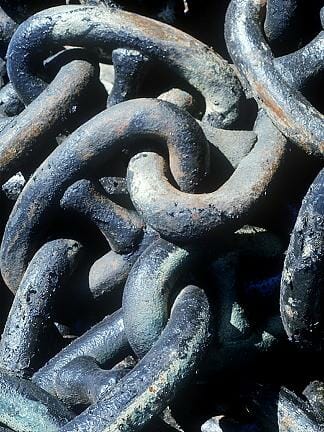
We’ve all experienced the heart pounding, butterflies in the stomach, “I couldn’t have” feelings of paying a bill and realizing that you might not have enough money in the account.
Or, maybe you have had a car problem, or unexpected hospital visit and realized that you don’t have enough in savings to cover it.
These situations don’t make you irresponsible necessarily, what they make you is a person in the average financial position. We’ve written articles previously that address similar topics such as:
It’s unfortunate that this is the average, but we’re going to provide you with some tools to make these scenarios a thing of the past, assuming you can commit. Can you?
A Trip with No Destination
How often do you leave your house with no place to go? How often have you gone to the airport with no plans, and just randomly picked a place to fly to? Do you go to the grocery store without the slightest idea of what you need?
The truth is few people go on a trip without some kind of plan. The few people that do go without a plan don’t do it every time. You need a plan, and while a budget is the best plan, some people just can’t seem to commit. What I’m going to do is provide you with a method that I employ to help enforce a spending cap. Now, this plan will work fine by itself, but I also pair it up with a budget as it helps keep control.
Inconvenience Yourself
This method involves impairing much of your access to the money. After all, if you can’t access it, you can’t spend it. What you need:
- Account A: A regular checking account with a debit card
- Account B: Another checking account at an online bank (no debit card allowed!)
- Direct deposit streamlines the process, but isn’t required.
Explanation of the Accounts
Account A is a standard run of the mill checking account with a debit card. This allows you to have nearly unlimited access to the money that goes into this account.
Account B is an online checking account with no debit card. Why an online bank with no debit card? This ensures that you can only access your money 1 of 2 ways. You can either write a check, or you can do an EFT transfer to your Account A. Both of these require time, and impede your access to your money.
We want you to use an online bank like Ally.com because you won’t have access to branches or ATMs. This will help you to avoid the temptation of making a “small” withdrawal “just this one time” for the amazing “sale of the year.”
How It Works
Now, let’s assume that $500.00 each month is enough for your groceries, your gas, and any other little expenses that you might have, and $1500.00 is enough to cover all of your bills and have some left over for saving. To simplify everything, you get paid one a month. This is how the setup would work:
- You’ve worked for the past month and you’re getting paid.
- Your employer direct deposits $500.00 in Account A and the remaining $1500.00 into Account B.
- Gas, groceries and other everyday expenses you pay with your debit card which pulls from Account A.
- Monthly bills such as a mortgage, phone, electricity, etc. are paid by check out of Account B.
Essentially, you’ve capped all of the frivolous spending that you could possibly do in a month at $500.00, because that’s the only money that you have real access to. You don’t have proper access to the money in Account B, because of all of the limitations. If you only spend $1,000.00 in bills from Account B, then you are left over with $500.00 for the month that you can’t spend. It just sits there for next month’s use.
Problems with This Method
If you have a true drive to spend your money, you can. You could write checks against Account B and use that money up. It is up to you to have enough will power and commit to only spending money out of Account A.
If you don’t have enough money in Account A, then you’ll eventually learn a lesson: spend less! If you consistently don’t have enough money in Account A, and you’ve spent as little as possible, then you may need to change the deposit amounts.